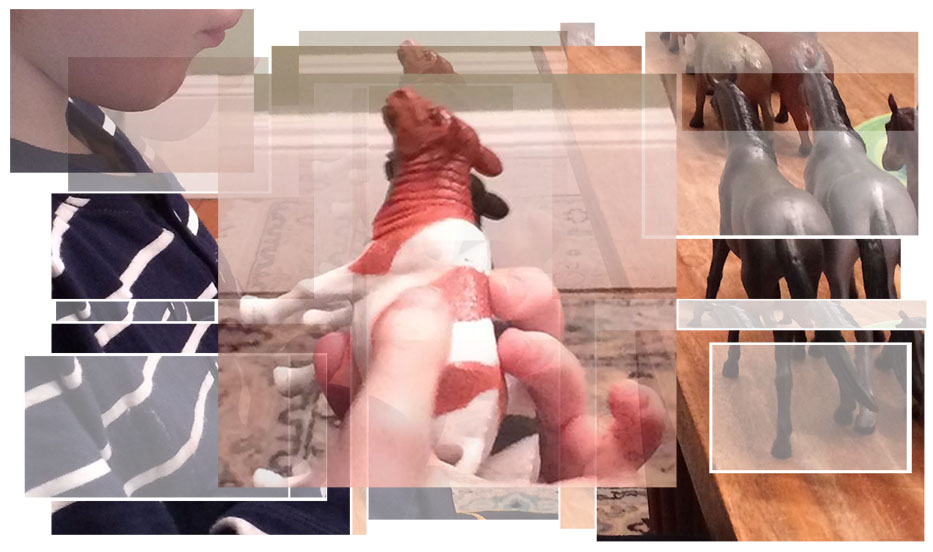
THIS ARTICLE IS MORE THAN FIVE YEARS OLD
This article is more than five years old. Autism research — and science in general — is constantly evolving, so older articles may contain information or theories that have been reevaluated since their original publication date.
Margaret Kjelgaard
In a paper published last year, we presented a theory that might help explain some of autism’s diversity of traits: Autism’s salient traits may be manifestations of an impairment in the ability to predict what might happen next1.
Our initial inspirations for this theory came from accounts, similar to our own, of people with autism and their parents. Although subjective, these descriptions embody knowledge borne out of years of experiencing and observing autism at close range. Even though personal accounts might not provide answers, they point to the big questions.
Many caregivers of children with autism note that these children require a structured, highly predictable environment. Even slight deviations from such predictability can prove distressing.
We informally refer to our proposal as the ‘magical world’ theory of autism. The hallmark of magic is the element of surprise, an unpredicted outcome. In small doses, such performances are enjoyable. Our theory posits that for an individual with autism, however, too much of the world has this characteristic, and events transpire without forewarning or apparent cause.
Our predictive skills are what allow us to fruitfully interact with our environment and interpret observations in the context of what has transpired before. Without these skills, the world is likely to appear chaotic.
This seemingly capricious environment induces anxiety, the feeling of a loss of control and, overall, a sense of being overwhelmed. Attempts to interact with the world, or to interpret it, will be devoid of the modulatory effects of prior context.
Central theory
Autism is famously heterogeneous in the way it manifests in different people. But, even within a single individual, it affects a remarkably diverse range of functions, such as motor skills, language and social behavior. It may well be that this diversity is the result of a constellation of disparate causes. But we cannot rule out the alternative possibility: Seemingly unrelated traits might have shared underpinnings.
As we considered the prediction theory further, we identified ways in which it could account for these seemingly disparate traits of autism. For instance, communication and social interactions require learning how one event predicts another — even when this predictive relationship is weak.
A shrug of the shoulders and lowered tone suggest the imminent end of a conversation; a sideways glance suggests boredom. Tolerating and tuning out background sounds, such as the rhythmic hum of a fan, requires predictive abilities as well.
Similarly, studies of stress and sensory bombardment have shown that repetitive behaviors may emerge as compensatory responses to a seemingly unpredictable environment. As a result, difficulties in social interactions and a tendency to engage in repetitive behaviors — although superficially unrelated — could be manifestations of a common underlying problem in prediction.
Experimental support
We are not only reexamining existing experimental evidence through the prism of our theory, we are designing studies to test it. In our lab at the Massachusetts Institute of Technology, we are testing the prediction theory in the context of sensory hypersensitivities.
Our theory is that low predictive skills may lessen habituation to repeated patterns and so render them aversive. We have begun several studies to measure habituation response to either predictable or unpredictable sequences of stimuli,such as soundsandsimple or more naturalistic visual stimuli. We are also investigating motor tasks that stress prediction, such as trying to track objects as they move in a computer game, as well as the motion of objects in more natural environments.
We hope that others will also continue to subject the theory to further tests — in particular, to assess whether people with autism have different predictive skills than do typical individuals or those with other developmental delays.
It is also exciting to note that other labs are beginning to make the case for the involvement of predictive impairments in autism. For instance, researchers have proposed a Bayesian account of autism: Experience exerts a weaker influence for people with autism than it does for neurotypical individuals2.
Some researchers have suggested that environmental uncertainty may pose challenges to the autistic brain3 and a possible connection between hypersensitivity and reduced prediction4. These accounts germinated independently, but we hope that an exchange of ideas will help further their development.
The magical world theory is an attempt to find a common thread across distinct aspects of autism. But even as we are encouraged by how well it fits with data and anecdotes, we have to acknowledge that — like any scientific theory — it may well be wrong.
Perhaps autism truly is a constellation of many separate traits, each with its own distinct cause. But the overarching principle of parsimony — which has served science so well — argues for exploring possible commonalities of cause.
If the theory of predictive impairment in autism proves to have merit, it would have great relevance for strengthening autism diagnosis and designing therapies. Even if it turns out to be incorrect, the data we will gather along the way will help us better understand the true nature of this complex condition — and a little of the mystery behind the magical world of autism.
Pawan Sinha is professor of vision and computational neuroscience at the Massachusetts Institute of Technology. Annie Cardinaux is a technical associate in his laboratory. Margaret Kjelgaard is associate professor of communications sciences and disorders at Massachusetts General Hospital Institute of Health Professions.
References:
1: Sinha P. et al. Proc. Natl. Acad. Sci. USA 111, 15220-15225 (2014) PubMed
2: Pellicano E. and D. Burr Trends Cogn. Sci. 16, 504-510 (2012) PubMed
3: Van de Cruys S. et al. Psychol. Rev. 121, 649-675 (2014) PubMed
4: Qian N. and R.M. Lipkin Front. Hum. Neurosci. 5,77 (2011) PubMed


By joining the discussion, you agree to our privacy policy.